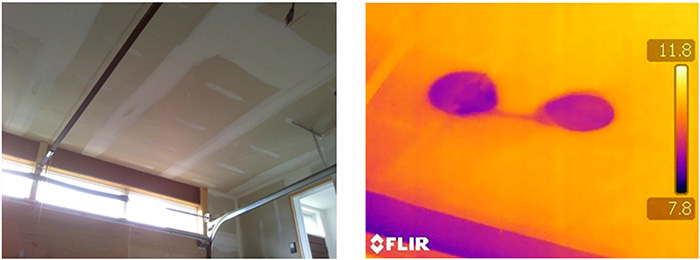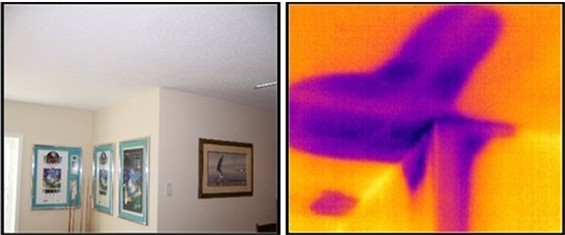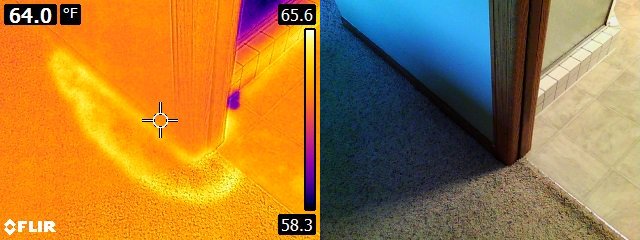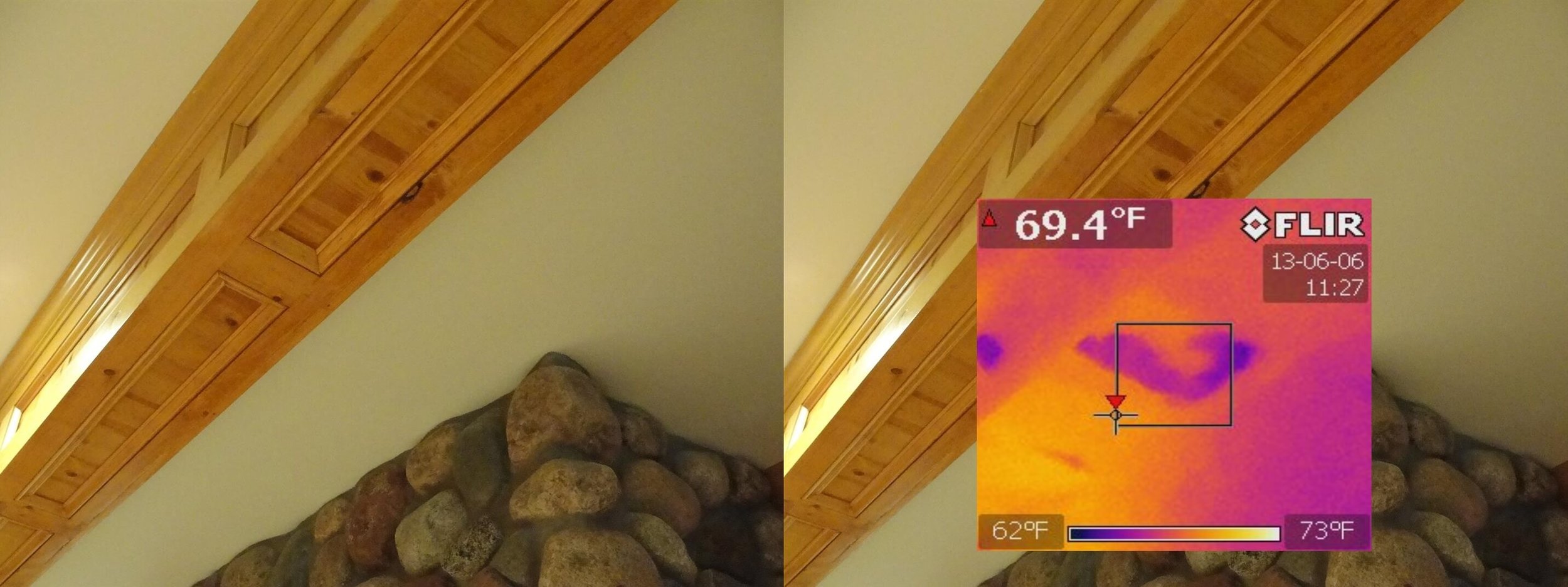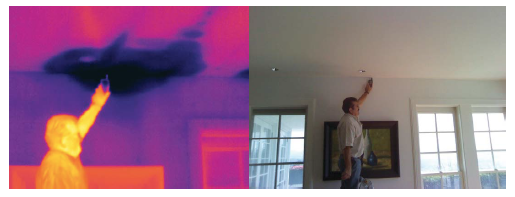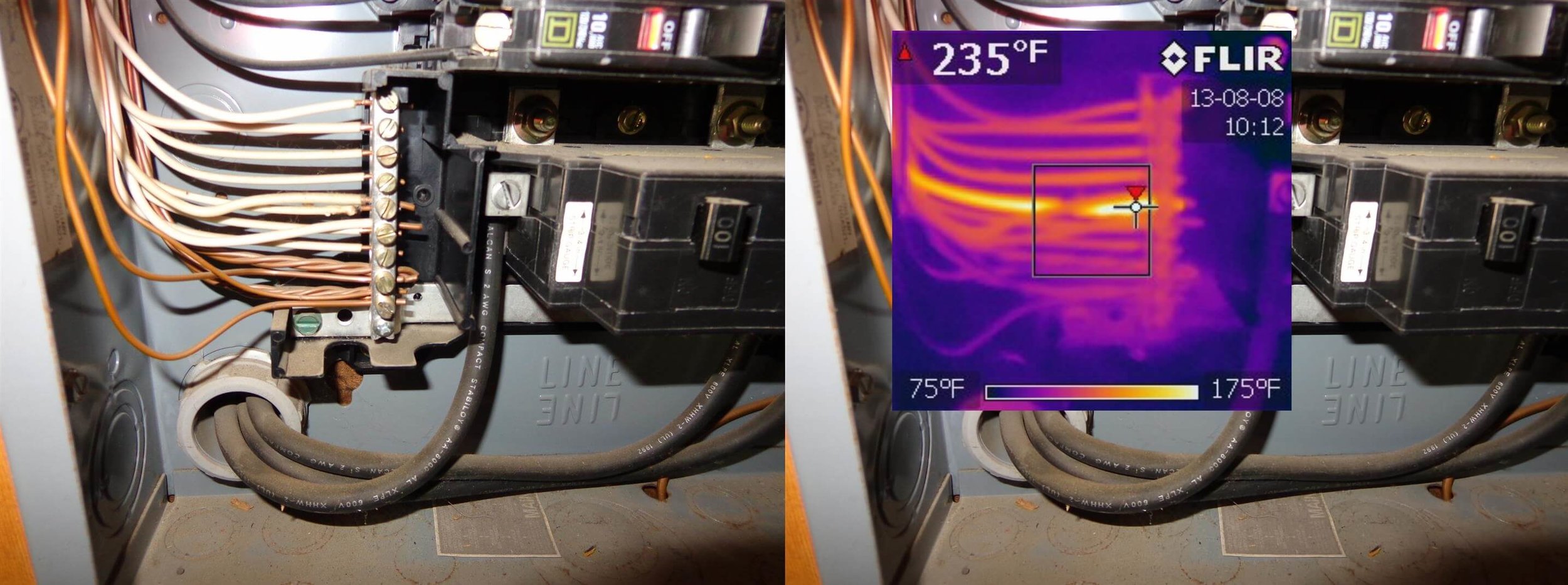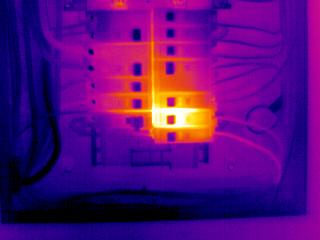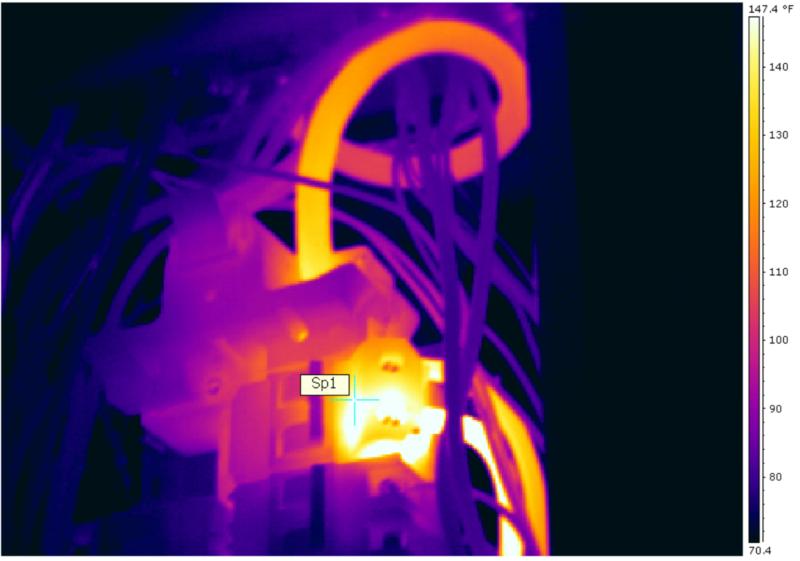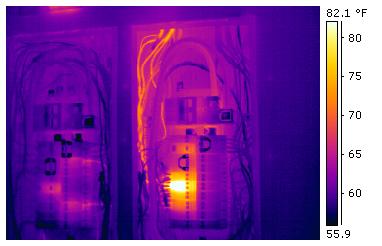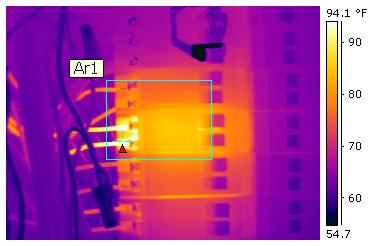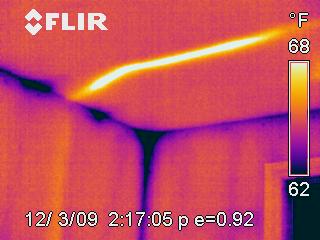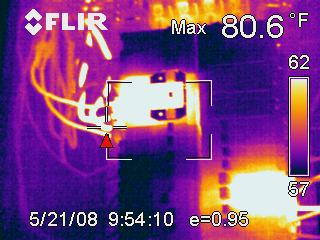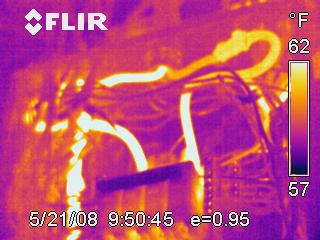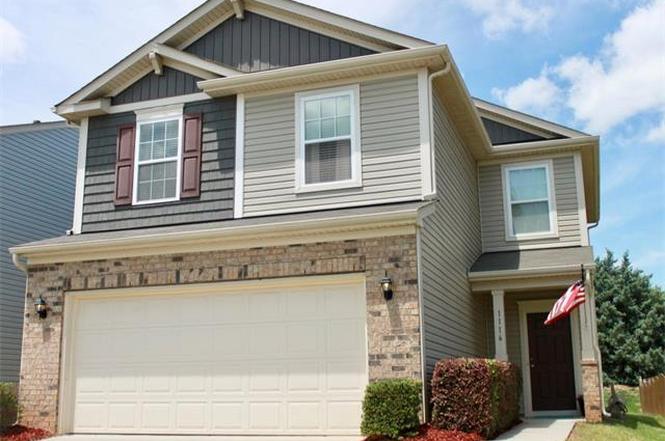What is Infrared Imaging?
To more easily understand what Infrared Imaging (IR) is and how it works requires a basic understanding of electromagnetic energy. The human eye sees a very small portion of the electromagnetic spectrum called the “visible spectrum” also called “white light”. An Infrared Camera sees the infrared portion of the spectrum, which is a much larger portion of the electromagnetic spectrum and “sees” much larger energy wavelengths with less energy than the visible light. More simply put, infrared imaging takes pictures of heat energy where the human eye sees light energy.
Many of the infrared images of structures may appear like x-ray images that are looking inside of walls, but x-rays are the opposite direction from visible light on the electromagnetic spectrum. The smaller energy wavelengths of X-rays (the size of an atom) can easily penetrate structures to “see” through them; however, the larger Infrared wavelengths (the size of a pin hole) cannot penetrate structure and can only “see” surface temperatures.
Infrared Image
Visible Light Image
X-Ray Image
Plumbing leaking and moisture intrusion issues create temperature differences from the surrounding area due to evaporative cooling effects and lower energy activity that are not visible in the visible light spectrum but are clearly visible in the Infrared spectrum, which can easily reveal hidden moisture issues.
Just as electrical current cannot be seen by the human eye, electrical issues create heat signatures that can only be seen by Infrared imaging. Shorts, faults, arcs, excessive resistance, and other issues can be quickly and easily seen in Infrared scans where the only other way to detect these issues is testing and analyzing each line and circuit with specialized electrical testing equipment.
Interpreting Infrared Imaging
Anomalies in an Infrared can fairly definitively indicate specific issues. In most cases testing with moisture scanners, electrical scanners, or other methods are necessary to confirm what was suspected by the IR scan. For example, air infiltration due to damaged insulation can have a similar appearance in an Infrared scan as some moisture issues. Thereby, when anomalies are detected, the inspector must have the training, knowledge, and special equipment to properly analyze the imaging, test the areas of anomalies, and determine the cause and any issues that may exist.
Limitations of Infrared Imaging
The truth is that infrared cameras cannot see into walls. Instead, the camera may pick up temperature differences that might indicate problems or nothing at all. Emphasis again on the word “MIGHT”. The factors involved that effect what can be seen in an IR image range from weather conditions to ambient temperatures, as well as the resolution and the quality of the camera used, and the training and knowledge of the person using the camera. Even when all the conditions are right, there are limitations to what the technology can do, and there are no guarantees.
Clearly there are quite a few disclaimers there and it might sound like IR has limited use and limited value. We acknowledge that there are limitations, which is why we will never make any assessment or judgments based solely on what an IR scan shows or does not show. IR simply adds value to our normal visual inspection and can help to discover hidden or un-seeable conditions based solely on a visual inspection.
Because Infrared imaging can disclose issues that are not otherwise visible means that they are found early, BEFORE they become big(ger) and more expensive. Most importantly, if the issues were not visible at the time of a home inspection then those issues will not become visible until after the home is purchased. The primary goal of our company is to protect our clients by discovering costly issue that harm their investment.
Timing and Training
Sun exposure, ambient temperature, wind, rain, or snow can impact the effectiveness of IR scans.
To give an example, take a look at these two houses, you see wall areas with sun exposure and areas in shade. From the exterior any wall surface with direct sunlight is going to be “washed out” due to reflecting ultra violet radiation and only the areas in shade will show the heat signatures of the house. Similarly, the direct sun exposure is going to heat the wall cavity and both convective and conductive heating will warm the interior surfaces of the walls in addition to the exterior.
Take a moment and think in a HEAT perspective, what the interior of these walls will look like. The house on the left, with the shaded overhang areas at the roof transitions, the kinds of area that are most suspect for leaking.
You can begin to reason that the wall surfaces on both the interior and the exterior are NOT going to show the same temperature as the wall areas in full sun.
The temperature differential is what we are looking for when we look for leaking, so just the time of day and sun exposure are going show or look very differently, which can give a false positive or negative indication. This is where timing, experience, knowledge, and training are crucial to get the most out of Infrared technology.






